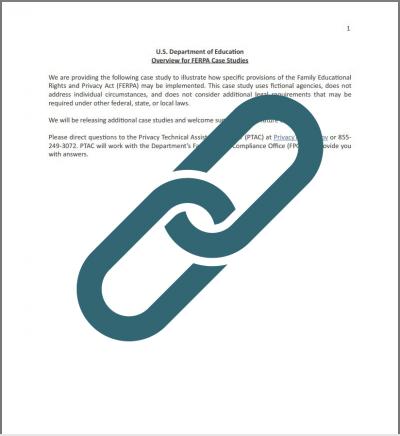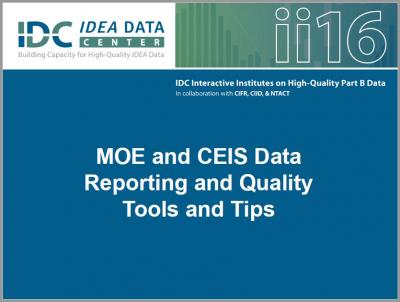Site Search
Results 190 - 196 of 355
Format: Presentations
Maximize the Return on Your Data Investment: Planning and Documentation for Data Collection and AnalysisThe presentation provides guidance on the importance of planning for data collection and analysis and documenting findings and decisions to facilitate reporting. Information also focuses on essential elements in planning and documenting data collection and analysis and how to maximize the efficiency and utility of state efforts to use data to make mid-course corrections to collection or analysis plans. Helpful handouts are included.
Format: Presentations
Measuring Growth and Impact in SIMR Areas by SubgroupsThe presentation provides an overview of data concerns that states should consider when measuring growth and impact in SIMR areas targeting subgroups (e.g., students with limited English proficiency or a specific disability category). Topics explored include sample size, use of achievement tests or alternative measures, and test validity and sensitivity.
Format: Guides and Briefs
Measuring Significant Discrepancy: An Indicator B4 Technical Assistance GuideThe TA guide describes the methods a state might use to appropriately determine which of its districts has a significant discrepancy (including a significant discrepancy by race or ethnicity) in the rates of out-of-school suspensions and expulsions totaling greater than 10 days for children with disabilities.
Format: Guides and Briefs
Methods for Assessing Racial/Ethnic Disproportionality in Special EducationThis TA guide addresses the more common methods for calculating racial/ethnic disproportionality in special education. IDC revised the guide, which the Data Accountability Center (DAC) originally published in October 2011, because of a change in SPP/APR Indicators 9 and 10 to remove underrepresentation from the measure.
Format: Reference Materials
Minimizing Access to PII: Best Practices for Access Controls and Disclosure Avoidance TechniquesThis case study illustrates how specific provisions of the FERPA may be implemented. The case study uses fictional agencies, does not address individual circumstances, and does not consider additional legal requirements that may be required under other federal, state, or local laws.
Format: Reference Materials
Model State TimelineThe Model State Timeline is one of two resources to support implementation of the Equity in IDEA Final Regulations. It outlines the tasks and timelines that states may consider as they implement the new rule and prepare for full compliance in SY 2018-19.
Format: Presentations
MOE and CEIS Data Reporting and Quality Tools and TipsIDC and CIFR staff presented an overview of tools available to states and LEAs around LEA MOE and CEIS requirements and data quality. They also presented information on considerations states and LEAs need to keep in mind in relation to the MOE and CEIS requirements and data quality. One state presented information about the policies, procedures, practices, and tools/ templates it has in place to ensure LEAs meet the LEA MOE and CEIS requirements and improve data quality. The state staff also discussed their work with CIFR around the LEA MOE calculator.








